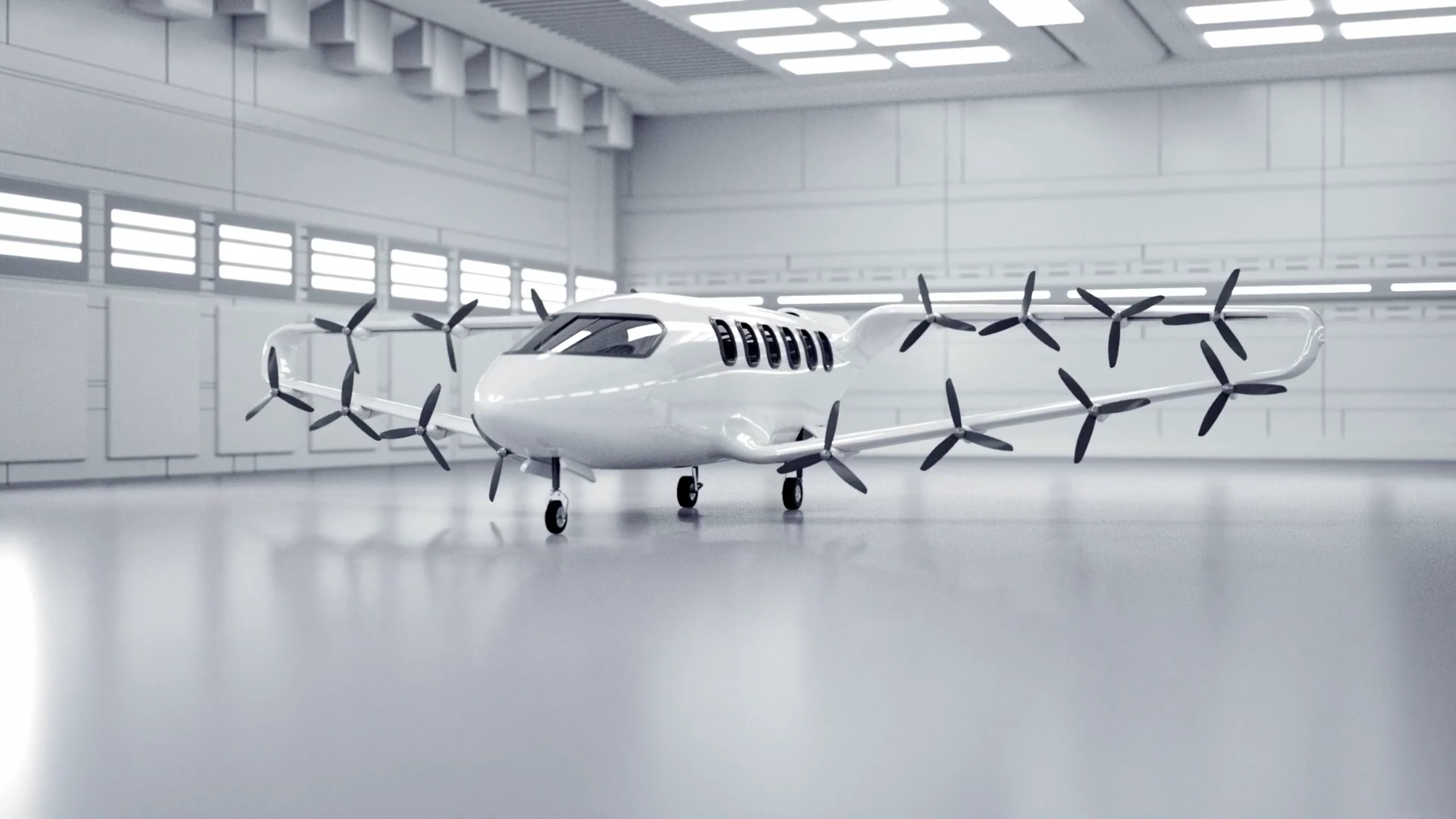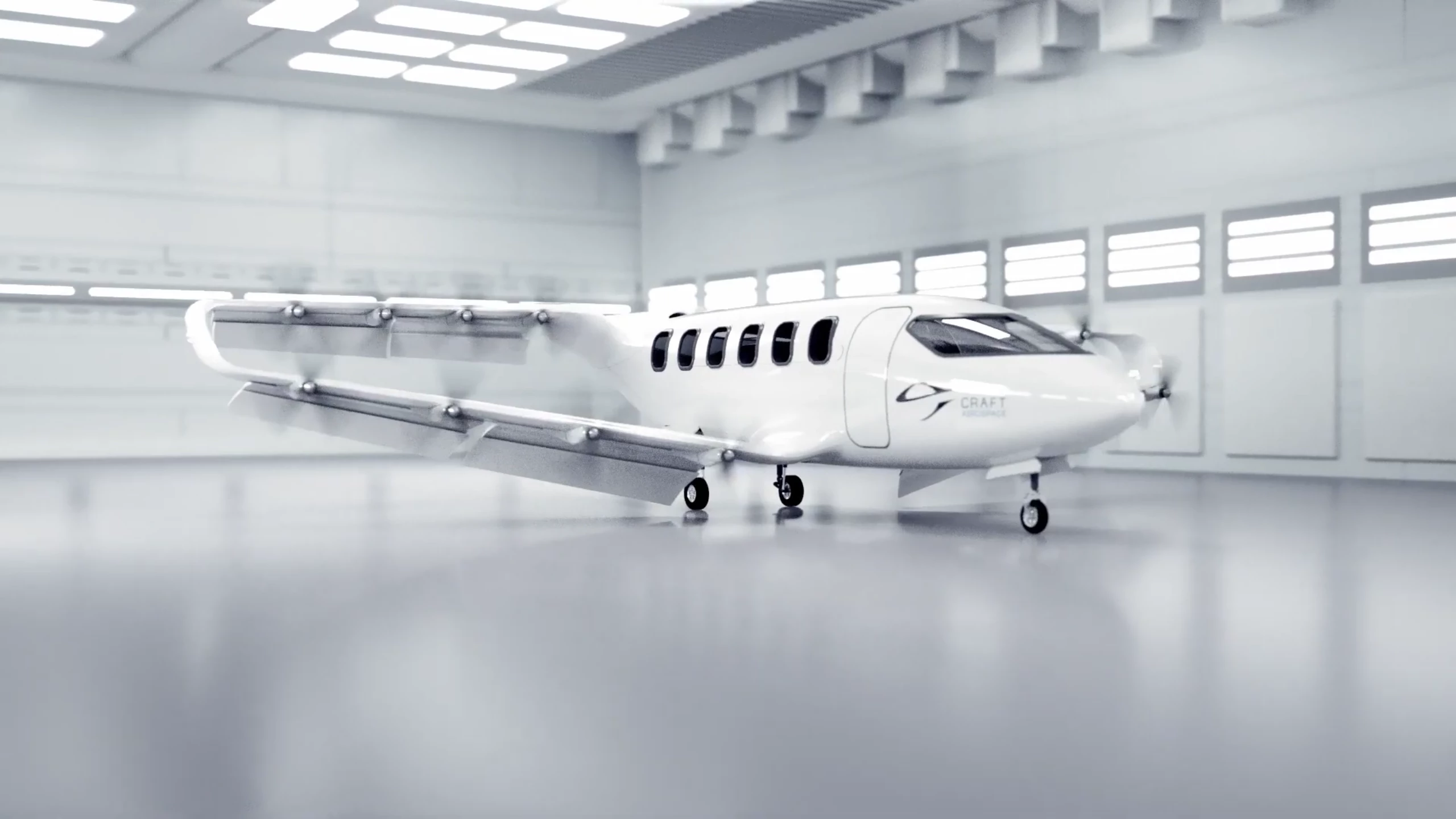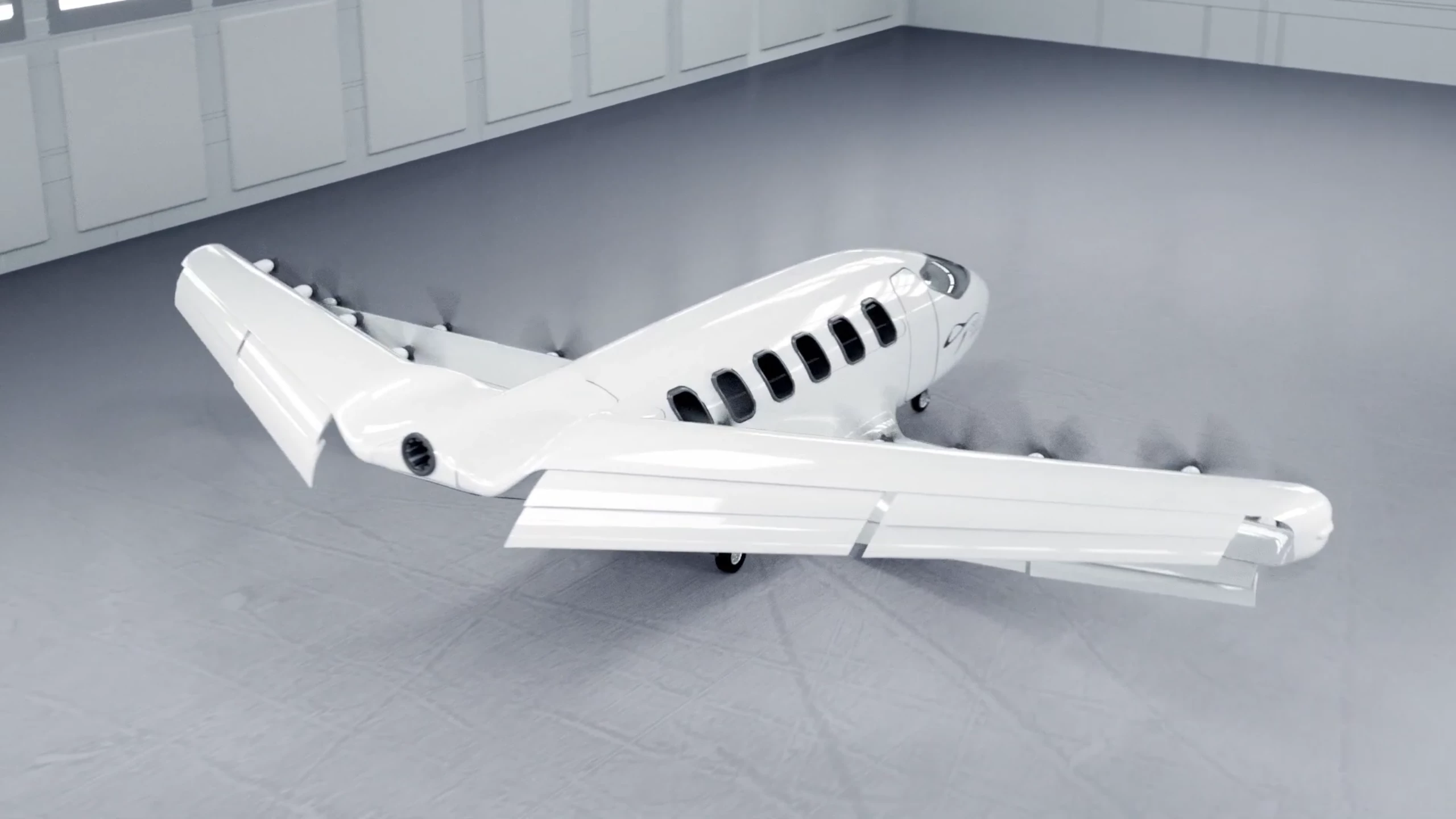Most eVTOL startups are focused on air taxi applications, rocking between two and six seats – but a few are thinking bigger. GKN Aerospace and Kelekona, for example, are working to get 30 to 50-seat monsters into the skies, taking more of a mass transit approach.
California's Craft Aerospace is shooting for something in the middle: nine-seaters, with a focus on inter-city regional flights. And it's doing so with a VTOL propulsion system the likes of which we've never seen before.
The main fuselage of Craft's aircraft looks a lot like a small traditional airliner. But things start getting weird when you get to the wings. The front wing joins to the bottom of the cabin, sweeping back at a fairly familiar angle. At their tips, though, the wings curve upwards to meet the rear wings, which are joined to the top of the rear of the cabin. Thus is formed a kind of box wing, with a diamond shape when viewed from above or below.
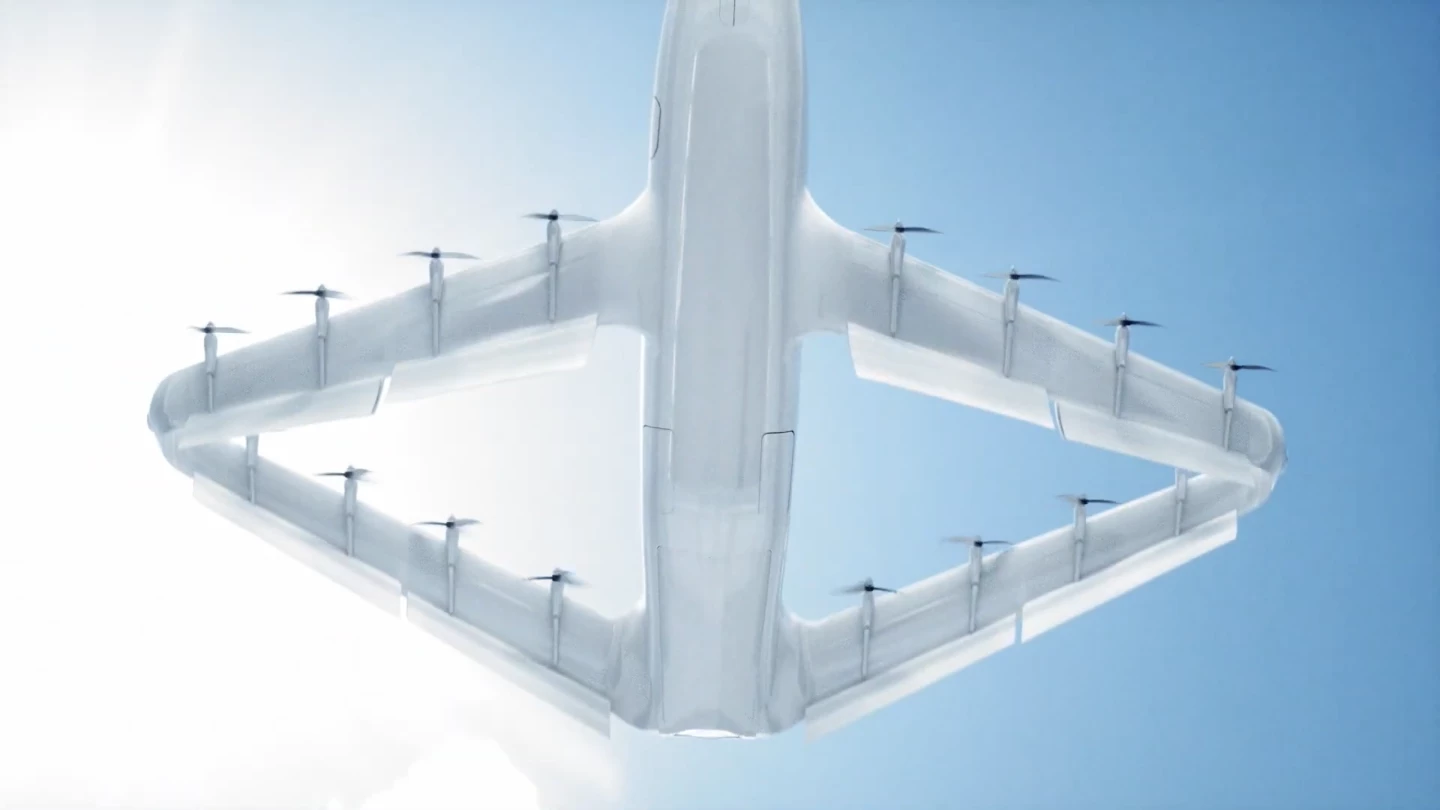
The surprises don't stop there. VTOL aircraft need to be able to point thrust down as well as backward in order to give them hover and cruise capabilities. Many designs, like the Beta Alia, simply throw a different system on for each of these use cases – these are called lift and cruise designs. Others tilt their propulsion systems as needed; we call these vectored thrust designs – examples would include the Joby S4 and Lilium Jet. There are tilt wings, which rotate the whole wing to vector thrust, like what Dufour Aerospace is making. There are also all kinds of hybrids in between. For example, the Archer Maker, Wisk Cora and Vertical Aerospace VA-1X, which are effectively lift and cruise designs with some tilting props, as well as other completely unique systems like the Pterodynamics Transwing.
And then there's this. Craft proposes to leave the box wing and electric props in place, but to vector the thrust downward for VTOL operations by using a series of blown flaps at the back of the wings. These extend and curve downward to redirect the airflow when vertical thrust is required, and then retract to allow efficient forward flight.
The company says it's validated this approach in small-scale prototypes, although it's only released a few frames of footage. We're fascinated to know what kind of efficiency you can get from this kind of approach; vertical takeoff and hover is an energy-intensive challenge that asks a lot of a powertrain even without trying to redirect thrust after it's gone through a propeller. How much energy do you lose trying to do things this way?

Then again, as Lilium argues, perhaps an efficient vertical lift system isn't as important as an efficient cruise when you're talking decent distances. Craft might be horribly inefficient on a short cross-town hop, but it might make up what it lost by being more efficient in cruise over a longer trip. Perhaps the weight saved by eschewing tilting propulsion units and the drag saved by not having a spare set of lift props swinging in the wind add up to make this thing more efficient than it looks over a certain distance.
This is leaving aside the other drawbacks often associated with closed-wing designs: they need to be designed carefully to avoid flutter conditions, the aerodynamics at the tips can be complex, and there's nowhere near as much previous work to draw on as with single-wing designs. On the other hand, box-wing-style aircraft could prove useful in the VTOL world simply because space is such a crucial constraint if you want to land on top of buildings or in urban areas.
The aircraft would carry payloads up to 2,500 lb (1,130 kg). It would reach speeds up to 300 knots (345 mph, 556 km/h), and it would use a hybrid-electric powertrain with some sort of range-extending turbine generator to deliver reduced-emissions VTOL flights between sites up to 1,000 miles (1,609 km) apart, which the company says covers about 65 percent of existing domestic air routes in the United States.
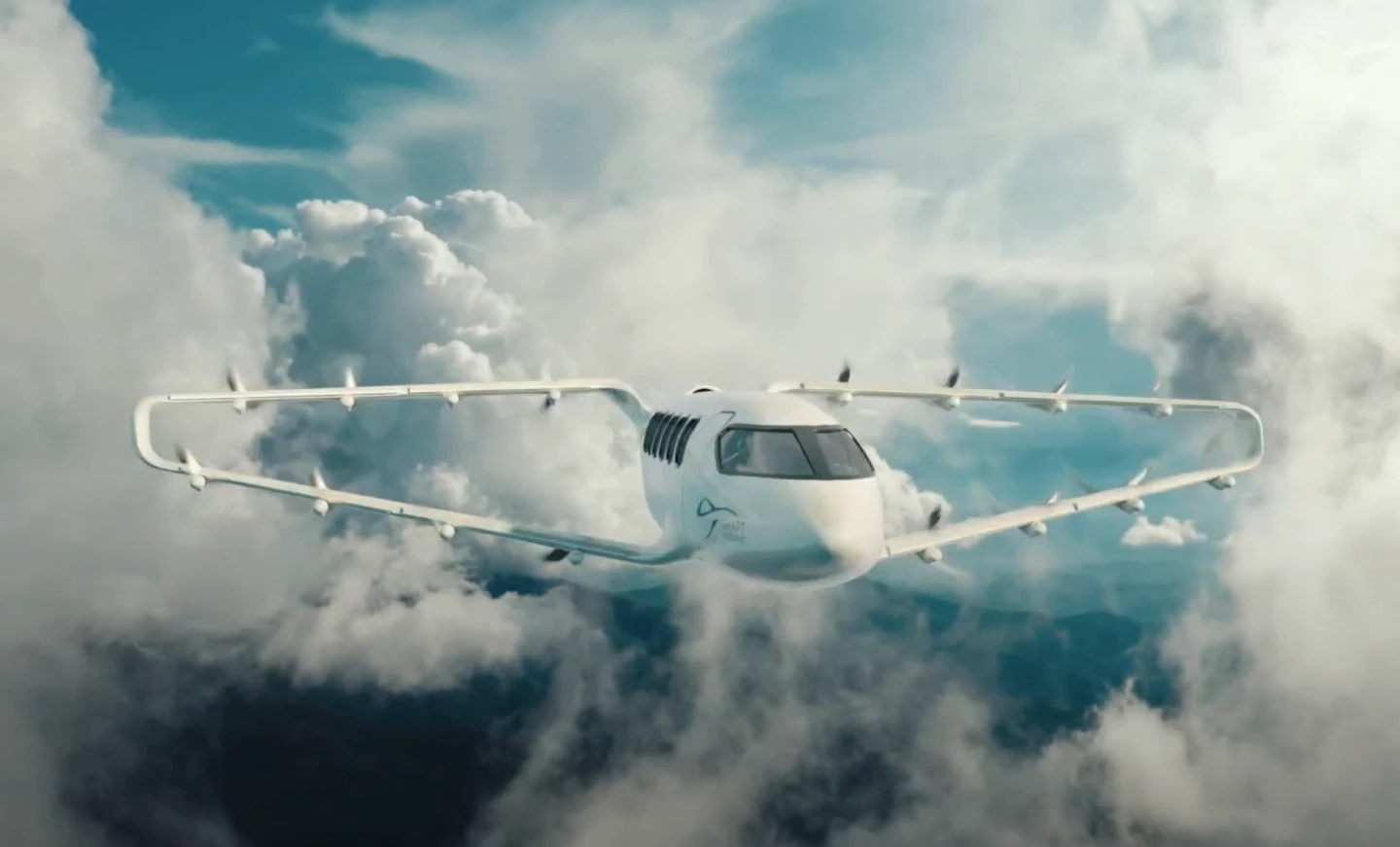
Flights using this service would be slower than traditional jet or turboprop aircraft, but over these relatively short distances, people could end up saving a significant amount of time simply by taking off and landing at urban vertiports rather than braving highway traffic to get out to an airport on the edge of town.
Craft has raised a modest US$3.5 million in early funding to develop and prove the design. According to TechCrunch, the company has already received a highly provisional letter of intent from small airline JSX to buy between 200-600 of these things if and when they make it to the market. The company is looking at around 2026 for a potential entry into service if everything from finance to engineering to certification all works out.
Certainly an interesting approach. See a short video below.
Source: Craft Aero

